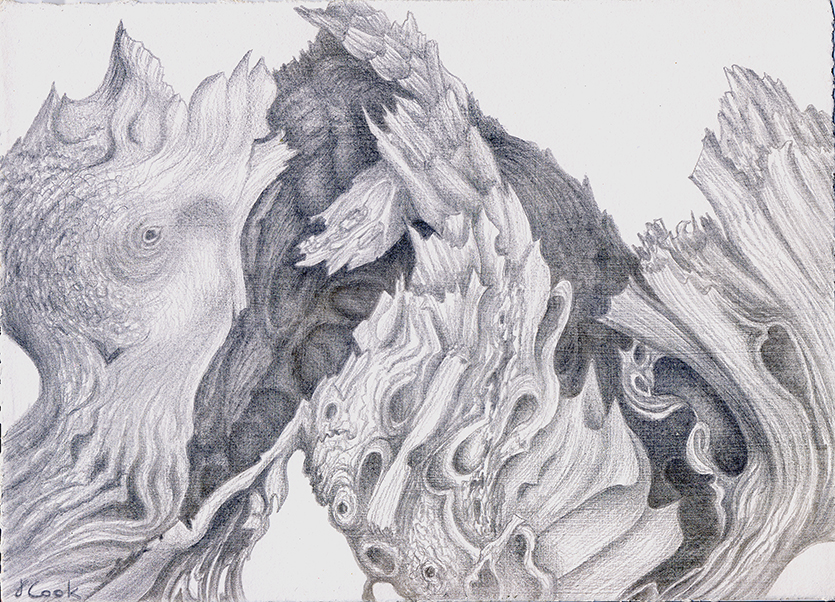While I was out drawing in the glorious sun we had today, I suddenly remembered an interesting statement I read last year in a March 31st entry on ArtDaily.org. It was made by artist and film-maker Lutz Becker, then Curatorial Fellow at Kettle's Yard in the United Kingdom. He curated a major exhibition at the De la Warr Pavilion in 2010, including 20th century experimental films, drawings and prints, that underscored two major trends in drawing, the gestural and the geometric.
Writing about his curatorial choices, he said, "It is the awareness of time as the measure of the distance between thought and realisation, of the value of the transient and sense of the fragility of the inspirational moment, that made me decide to show predominantly works on paper, drawing – no longer about the recording of appearances, but as a language reflecting its own becoming, often daring and experimental."
He was describing, in probing terms, the way I have been feeling as I explore the new vocabulary of drawing in silverpoint on a black surface. Since it is a version of silverpoint that seems to lend itself to more abstract drawings, more experimental ventures, I have been seeking subjects that talk to me in this language. Today, I was drawing a favourite dead cedar stump, a sprawling amazing sculpture that changes constantly as the light moves around it.
Cedar Lace, silverpoint, Jeannine Cook artist, Private Collection
The awareness of time has always been a source of fascination and amazement to me as soon as one starts to draw or paint. Time becomes meaningless. But the fact that time could be "the measure of the distance between thought and realisation" is very perceptive, particularly when one is working plein air. Today's silverpoint needed to be done instinctively, basically without the time for any conscious thought. There would be time, later, for evaluation. It was more important simply to draw, to make marks that mattered. To listen to "inspiration" rather than any reason.
Silverpoint, in a way, is always such a leap of faith. You have to start somewhere, and then just go with whatever happens, fleeting and fragile as the moment may be. Since you cannot erase anything, the notion of time has to disappear, except in one respect. Since you cannot achieve real darks immediately, as you can with graphite, for instance, you have to wait for the silver mark to oxidise, and then you can go back in to emphasise more that dark. But that perception of time is more a pause in the rhythm of drawing, of mark-making, than any real awareness of a clock ticking away.
Silverpoint, to my mind, fits perfectly Lutz Becker's description of drawing "no longer about the recording of appearances, but as a language reflecting its own becoming", when time has little meaning.
